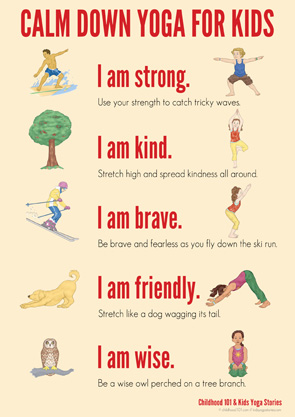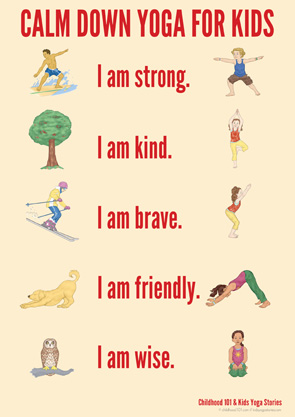Given the popularity of the first two Managing Big Emotions Printable Posters (you can find poster one here and poster two here), today I have teamed up with the author of Kids Yoga Stories, Giselle Shardlow, to bring you a simple yoga for kids sequence to use as a calm down activity with your child. Be sure to read through Giselle’s suggestions for introducing the series, especially if you have never tried yoga with your child before.
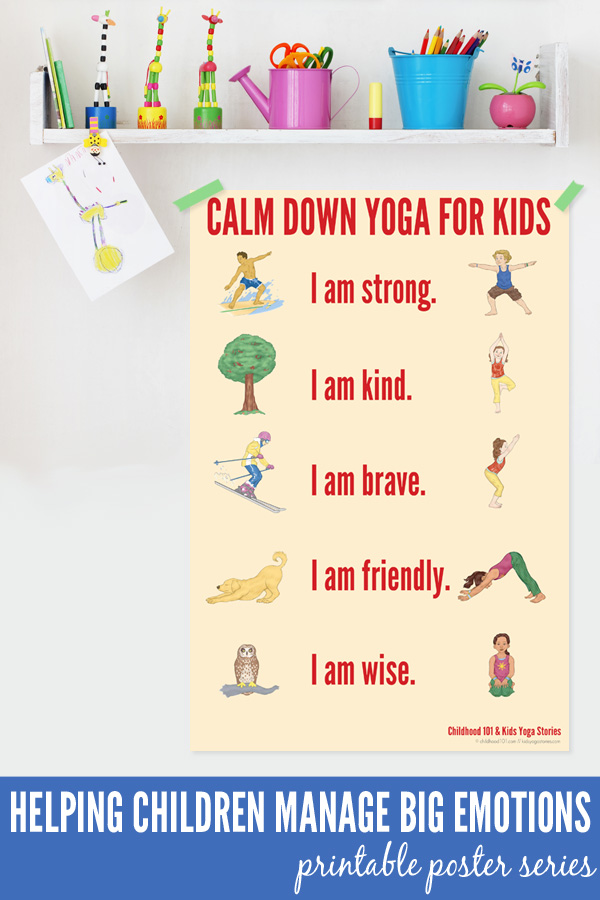
Imagine that your child has a friend over for a play date. They are busy playing together, when suddenly your child’s Lego structure gets knocked down. From your child’s facial expression, you see that she is about to explode. You catch her eye and give her the signal. Then she darts away to her “calm zone,” where you hear her counting down from five, while going through five yoga poses for kids. There’s a break of silence, and then after a little bit, your child comes back down to resume play. You look at each other and wink.
Sounds blissful, right? But it is possible. Helping children to regulate their emotions doesn’t necessarily happen overnight. Science tells us that the parts of the human brain that are critical to handling emotions aren’t fully developed until into we’re in our twenties, but we can take little steps when children are young to help them manage their feelings.
Brain research shows us that movement and breath help to alleviate stress and anxiety. Our bodies are designed to move—just think about how many miles a day the cave people used to run every day. Modern people lead mostly sedentary lives, and we almost have to relearn how to use movement to lead happy and healthy lives.
Managing Emotions through Yoga for Kids
Don’t worry if your family hasn’t tried yoga before; use the images and descriptions below as a guide. Focus on using movement to invite calm, and don’t worry about practicing perfectly aligned poses. Ensure that your child has enough space to practice the poses so that they aren’t bumping heads or stubbing toes. And make sure that they are safe with their bodies. For example, they shouldn’t be trying to wrap themselves into pretzels or bending into deep back bends. Have them focus on gentle movement that feels comfortable. This process will help to increase their body awareness, too.
Introduce the idea of yoga and the yoga poses long before the tantrum starts, so you’ll be familiar with the routine when it’s time to take action. Your child will feed off your enthusiasm when you introduce this yoga-pose sequence. Explain that it’s good for their brain. Introduce the “Move to Calm” strategy when you are both in a good mood and connected with each other. You might find yourself practicing the yoga pose sequence to manage your own emotions, too!
As your child goes through the flow of these five yoga poses, he can pretend to be a surfer, tree, skier, dog, and owl. If he’s interested, he could also state the corresponding “I am…” statements. Once he is comfortable with the yoga-pose sequence, he can take a deep breath in and a deep breath out during each pose, to further help to calm his body and mind.
So let’s look at the Move to Calm strategy. Depending on the age and needs of your child, you might practice only one yoga pose (like Child’s Pose) and count down from five while in that pose. But let’s say your child is ready to choose five yoga poses. She could make up her own sequence by looking at our Yoga Poses for Kids page for inspiration or by following this yoga flow sequence.
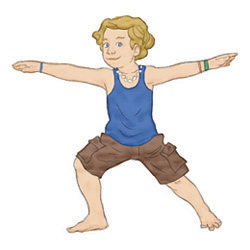 “I am strong.” Pretend to be a surfer.
“I am strong.” Pretend to be a surfer.
To do Warrior 2 Pose: From standing position, step one foot back, placing the foot so that it is facing slightly outwards. Take your arms up in parallel to the ground, bend your front knee, and look forward. Pretend to be a surfer and use your strength to catch tricky waves.
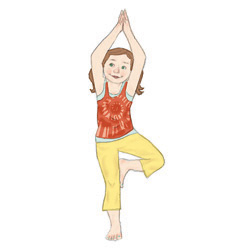 “I am kind.” Pretend to be a tree.
“I am kind.” Pretend to be a tree.
To do Tree Pose: Stand on one leg, bend your knee, place the sole of your foot on the opposite inner thigh, and balance. Sway like a tree. Think of trees being kind by offering shade, creating oxygen, and providing homes to animals.
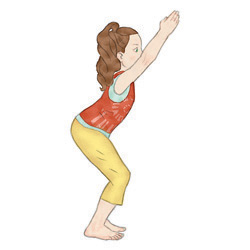 “I am brave.” Pretend to be a skier.
“I am brave.” Pretend to be a skier.
To do Chair Pose: Stand tall with your feet hip-width apart, bend your knees, and keep a straight spine. Hold your hands out in front of you, pretending to grasp ski poles as you fly down a ski run like a brave and fearless skier.
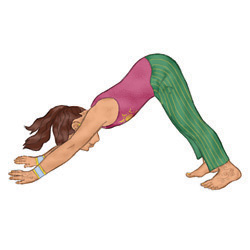 “I am friendly.” Pretend to be a dog.
“I am friendly.” Pretend to be a dog.
To do Downward-Facing Dog Pose: Bend down and place your palms flat on the ground. Step your feet back to create an upside-down V shape with your buttocks high in the air. Straighten your legs, relax your head and neck, and look down between your legs. Think of being an eager and friendly dog.
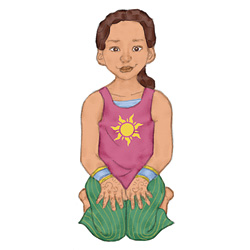 “I am wise.” Pretend to be an owl.
“I am wise.” Pretend to be an owl.
To do Hero Pose: Drop your knees to the ground and come down to rest upright on your heels. Then pretend to be a wise owl perched on a tree. Twist your upper body one way and then the other.
Start slowly and focus on your child’s success. If your child doesn’t click with using movement as a calming down strategy, don’t push it. Leave it for a while, and then try again. Just like every strategy, nothing is a one-size-fits-all solution, so feel free to adapt and change the yoga method to suit your child’s interests and needs. Introducing the idea of using movement and breath to help their brains to re-boot and re-focus is what’s important.
To download your poster: Click on your chosen poster image below – there are two versions for you to choose from. This will open a larger PDF version that you can download to your own computer. Open the PDF and print. When printing, select “Fit to printable area” (or similar) to ensure the page fits with your printer type and local paper size (these have been created at A4 size). I printed ours onto matte photo paper. Personal, non commercial use only.
A reminder: These posters are as much, if not more, for the parent or significant adult helping the child manage these emotions, as they are for the child. They are a tool to open discussion with your child about having a calm down plan and they can act as a visual prompt to help you (the adult) as you guide your child in that moment when they are struggling to manage. You know your child best and so while this process will work well for some children, it may not work for others. In the same way, their effectiveness will depend on the age and development of your child.
quoted from “https://childhood101.com/yoga-for-kids/”

